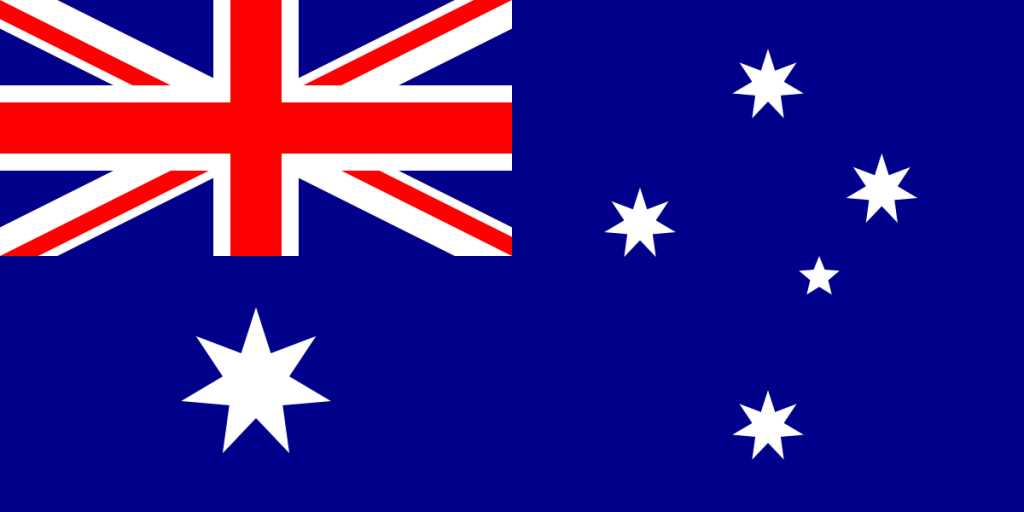Importing from Australia


Australia Country Profile
Official Name (Local Language) Commonwealth of Australia
Capital Canberra
Population 22,992,654
Currency Australian Dollar
GDP $1,257 billion
Languages English
Telephone Dial In 61
Australia Exports Profile
Exports ($m USD) 230,163
Number of Export Products 4,181
Number of Export Partners 211

Australia Economic Statistics
| Government Website | https://australia.gov.au/ |
| Sovereign Ratings | https://countryeconomy.com/ratings/australia |
| Central Bank | Reserve Bank of Australia |
| Currency USD Exchange Rate | 1.352 |
| Unemployment Rate | 5.8% |
| Population below poverty line | NA |
| Inflation Rate | 1.4% |
| Prime Lending Rate | 3% |
| GDP | $1,257 billion |
| GDP Pro Capita (PPP) | $48,800 |
| Currency Name | Australian Dollar |
| Currency Code | AUD |
| World Bank Classification | High Income |
| Competitive Industrial Performance | 22/138 |
| Corruption Perceptions Index | 13/180 |
| Ease of Doing Business | 18/190 |
| Enabling Trade Index | 26/136 |
Access trade, receivables and supply chain finance
We assist companies to access trade and receivables finance through our relationships with 270+ banks, funds and alternative finance houses.
Get StartedImporting from Australia
Economic growth in Australia has most recently been driven by the mining and agricultural sectors, which together amount to about 20% of GDP. Raw materials, mainly shipped to Asia, have been the dominant export.
Australia’s top exports are iron ore ($68.2 billion), coal ($41.2 billion), gold ($21.6 billion), petroleum gas ($15.2 billion) and crude petroleum ($15.7 billion). Top export destinations include China ($94.4 billion), Japan ($45.4 billion), South Korea ($19.5 billion), India ($10.9 billion) and Hong Kong ($10.3 billion).
Importing from Australia: What is trade finance?
Stock finance is a revolving facility which alternative financiers offer – it enables companies to purchase inventory and can help reduce the pressure from working capital issues.
Often, an alternative financier will fund all of the cost of the stock, including charges (e.g. shipping costs).
Trade finance offers upsides over more traditional bank funding like asset finance or loans. Trade finance provides quick funding without affecting existing bank relationships.
How does it work?
If you’re a firm importing or exporting goods from or to other countries, then a trade finance facility would help you to fund this through offering a letter of credit (LC) or some form of cash advance.
I’m looking to import from Australia, how can Trade Finance Global help, and how does it work?
If you are looking to import stock from other international markets, you may require import finance, which is an agreement between yourself (the importer) and the foreign exporter. A non-bank lender would act as the intermediary, paying the exporter on your behalf until you get the products and have then sold them to your customer. Repaying the financier then occurs over an agreed period.
Chart Showing GDP Growth Compared to rest of world
GDP Composition for Australia
Agriculture
3.6%
Wheat, barley, sugarcane, fruits; cattle, sheep, poultry
Industry
28.2%
Mining, industrial and transportation equipment, food processing, chemicals, steel
Services
68.2%
Map
Top 5 Export Partners
| Country | Trade | % Partner Share |
| China | 68,096 | 29.59 |
| Unspecified | 34,611 | 15.04 |
| Japan | 24,008 | 10.43 |
| Korea, Rep. | 13,146 | 5.71 |
| India | 10,757 | 4.67 |
Top 5 Export Products
| Export Product | Number |
| Non-agglomerated iron ores and concentrates | 21.1% |
| Bituminous coal, not agglomerated | 18.8% |
| Natural gas, liquefied | 8.8% |
| Gold in oth semi-manufactured forms,non-monetar | 5.7% |
| Aluminium oxide, other than artificial corundum | 2.5% |
Local Authors
Local Partners
- All Topics
- Australia Trade Resources
- Export Finance & ECA Topics
- Local Conferences























